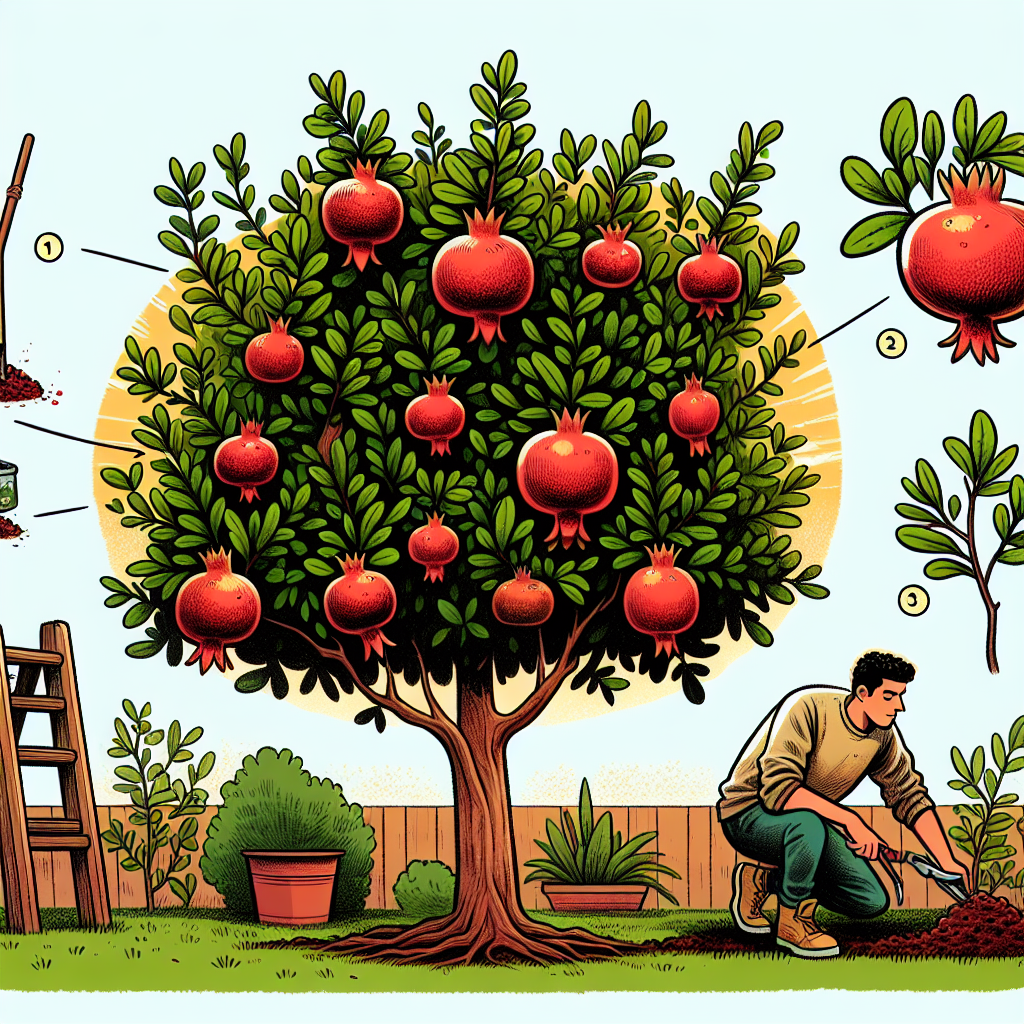
How to care for pomegranate tree
Introduction to Growing Pomegranate Trees
Pomegranate trees (Punica granatum) are not only stunning additions to any garden but also produce delicious, nutrient-rich fruits. Known for their vibrant red color and characteristic tart-sweet taste, pomegranates have been cherished for centuries. Whether you are an experienced gardener or a novice, understanding how to care for pomegranate tree is essential to ensure they thrive and produce bountiful harvests.
Choosing the Right Location
Selecting the perfect location for your pomegranate tree is the first step towards healthy growth. They prefer areas with plenty of sunlight and well-drained soil. Here are some key aspects to consider:
- Sunlight: Pomegranates require at least six hours of direct sunlight each day to produce abundant fruit.
- Soil: Well-drained, sandy-loam soil is ideal. Avoid heavy, clay soils that retain water, as this can lead to root rot.
- Space: Ensure adequate spacing around the tree to promote air circulation—this can help prevent diseases.
Planting Your Pomegranate Tree
Once you have selected the ideal location, it's time to plant your pomegranate tree. Follow these steps to ensure successful planting:
- Timing: The best time to plant pomegranate trees is in early spring after the last frost.
- Prepare the Hole: Dig a hole twice the width of the root ball and as deep as the root ball itself.
- Add Soil Amendments: Incorporate organic matter like compost to improve soil texture and fertility.
- Positioning: Place the tree in the center of the hole, ensuring that the graft union (if applicable) is above soil level.
- Backfill: Fill the hole gently with soil and water thoroughly to eliminate air pockets.
Watering Your Pomegranate Tree
Proper irrigation is crucial for healthy growth, especially during the first few years after planting. Here are some important watering tips:
- Frequency: Water your tree deeply but infrequently. Established pomegranate trees need less water than young trees.
- Soil Moisture: Monitor the soil moisture—water when the top two inches of soil are dry.
- Drought Tolerance: Pomegranates are drought-tolerant once established, but during flowering and fruiting, they require more water.
Fertilizing Your Pomegranate Tree
To encourage healthy growth and fruit production, you should incorporate the right nutrients into the soil. Fertilization guidelines include:
- Soil Testing: Conduct a soil test to determine nutrient levels before adding fertilizers.
- Type of Fertilizer: Use a balanced fertilizer with a ratio such as 10-10-10. Organic options like compost or well-rotted manure can also be beneficial.
- Application: Feed during the growing season, typically in early spring and again in late summer.
Pruning Your Pomegranate Tree
Pruning is an essential practice to maintain the health and shape of your pomegranate tree. Here's how to do it effectively:
- Timing: Prune in late winter or early spring before new growth begins.
- Remove Dead Wood: Cut out any dead, damaged, or diseased branches to promote airflow and reduce disease risk.
- Shape the Tree: Aim for an open-center structure, allowing light to penetrate the interior of the tree.
- Thin Out: If there are too many branches, thin them out to encourage better fruit development.
Pest and Disease Management
Pomegranate trees are generally low-maintenance, but they can be susceptible to pests and diseases. Here are some common threats and how to manage them:
- Pests: Watch for aphids, pomegranate butterflies, and mealybugs. Use insecticidal soap or neem oil as treatments.
- Diseases: Powdery mildew and various root diseases can occur. Ensure good air circulation and avoid overhead watering to minimize these risks.
Harvesting Your Pomegranates
The anticipation of harvesting pomegranates makes the care and patience worthwhile. Knowing when and how to pick your fruit is crucial:
- Timing: Pomegranates typically ripen in late summer to early fall. Look for fruit that has turned a deep reddish color.
- Texture: The fruit should feel heavy for its size and have a slightly leathery skin.
- Harvesting Method: Carefully twist the fruit off the branch; avoid pulling to prevent damage to the tree.
Storing Pomegranates
Once harvested, proper storage will help extend the shelf life of your pomegranates:
- Refrigeration: Store whole pomegranates in the refrigerator. They can last 1-2 months.
- Juicing: If you prefer pomegranate juice, make sure to refrigerate any juice immediately and consume within a week.
Conclusion: The Rewards of Caring for Pomegranate Trees
Growing pomegranate trees can be a rewarding journey, combining the joys of gardening with the benefits of fresh, flavorful fruit. By understanding how to care for pomegranate tree, from planting to harvesting, you can create a thriving environment for your plants. With the right care, you will enjoy not just the beauty of the trees but also the deliciousness of homegrown pomegranates. Happy gardening!
By Guest, Published on October 6th, 2024